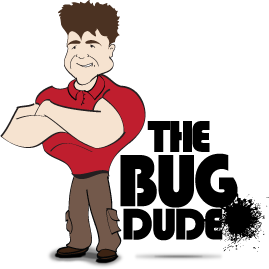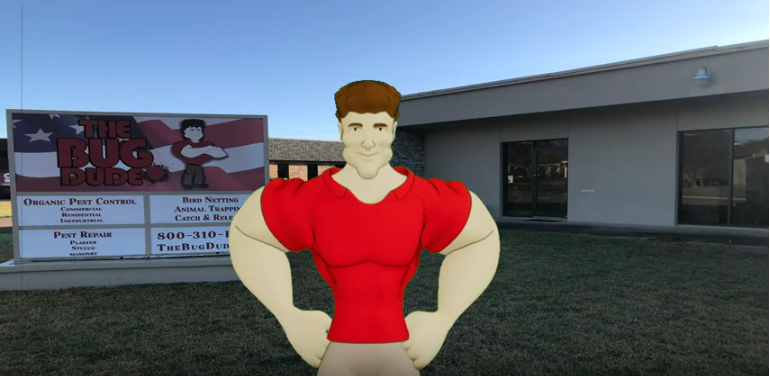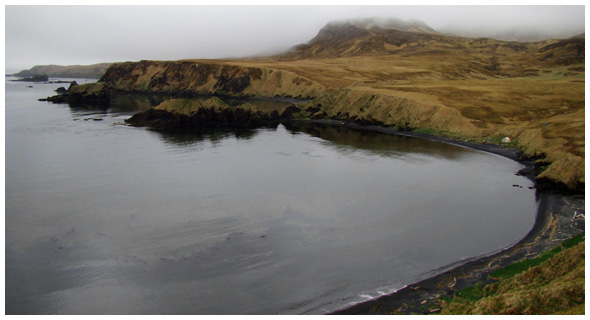Hawadax Island
Nearly a year and a half after Rat Island was declared “rat-free,” the U.S. Board on Geographic Names on May 10 officially restored its original Aleut name. Hawadax Island, reflecting the island’s true traditional name and celebrating the successful removal of invasive rats from this important seabird sanctuary.
Located in the Aleutian chain 1,300 miles west of Anchorage, Alaska, this remote island in 2008 was the largest rat eradication endeavor to date in North America and the third largest in the world. Some 25 tons of a brodifacoum bait, manufactured by Bell Laboratories, were aerially broadcast on the 10-square-mile island to purge it of rats, once and for all.
Rats were first introduced to the island when a Japanese fishing vessel ran aground in 1778 and they had thrived ever since, preying on the eggs and chicks of nesting seabirds. By the time research staff from the U.S. Fish and Wildlife Service, The Nature Conservancy,and Island Conservation of Santa Cruz, Calif., initiated the Aleutian Seabird Restoration Project in 2004, the island was “eerily quiet” for lack of birds.
But, that’s all part of the island’s history now that non-native Norway rats were successfully eradicated and, in their place, native seabird species, such as the Leach’s Storm petrel, are rebounding. Restoring the island’s original name puts closure to that chapter.
Community Connection to the Land
For Gregg Howald of Island Conservation who worked on the project, the name change also attests to the deep bond between the people and their land. “For me, the name change gives us an insight into the impact of the work we do beyond the ecological recovery, and demonstrates the connection the local communities have to the land, and the necessity for strong partnership for sustainability of these restoration programs and projects long after we are down the road to the next island.”
“Island Conservation congratulates the people of the Aleutian Islands and Alaska for embracing the removal of rats from Hawadax Island and, with this formal name change, the symbolic return to an earlier time.”
Historic Aleut Name
Hawadax Island, the name petitioned by the Aleutian Pribilof Islands Association (APIA) in Alaska, which represents the Unangan/Unangas, was chosen after extensive research of historical Alaskan records, the Aleut dictionary and other Aleut sources.
“Hawadax (pronounced ha-wa-thah) is the oldest name we could find that did not refer to rats,” said Karen Pletnikoff, APIA’s environment and safety program manager who spearheaded the name change.
“Hawa, the root word,” she explained, “is directional, meaning “over there” and dax means “those two,” a fitting description of the island’s geography, referring to “two round knolls on the island that are so large, so prominent you can see them from the water.”
Although uninhabited now, the island was used for millennia by Aleut, who relied on seabirds for clothing, protein, and ceremonial garb. The arrival of rats and their decimation of native seabirds likely negatively impacted what was once a large community. ”
The loss of those birds would have been a real driving force on where people could live,” Pletnikoff pointed out. Similarly, anything that would damage their seal-skinned kayaks, whether a rocky shore or a gnawing animal, was a threat to their survival because kayaks were essential for hunting and transport.
Some Aleut speakers in the village of Atka, located 300 miles from the island, still referred to it as Hawadax. Rat Island was the name given to it by a Russian explorer in 1827 for obvious reasons.
In the future, maps put out by the US Geological Service and the Coast Guard will reflect the restored name. And, although there were no ceremonies marking the return to its original name, the change had full support of the APIA and The Aleut Corporation that provided input to the historical preservation office.
“Every comment was positive and supportive of the change,” said Pletnikoff. “It took well over a year, plus two years to determine that the island was rat-free. It was well worth it to restore the historical name and highlight the successlul removal of an invasive species that had such detrimental effects on the island.
“Seabirds are essential to our ecosystem. Any temporary loss of high-population-level birds was fair trade-oil to get back such an important habitat for threatened and endangered species,” she added.
“The general numbers of returning seabirds is very impressive. Early reports about recovery of the rare and endemic Giant Aleutian subspecies of Song Sparrow are very exciting.”
Since the bait drop in 2008, researchers have monitored the island for signs of rats and bird recovery and will return in 2013.
Peter Martin, Bell’s director of research and development, said Bell was proud to apply its expertise to developing an aerial bait that was used successfully to remove rats from this important seabird sanctuary.
“We are certain that Hawadax will become a symbol in the international conservation community of how a dedicated group of individuals were able to turn back the pages of time to a day where endangered and threatened bird and animal species can again flourish in a pristine environment,” Martin added.





